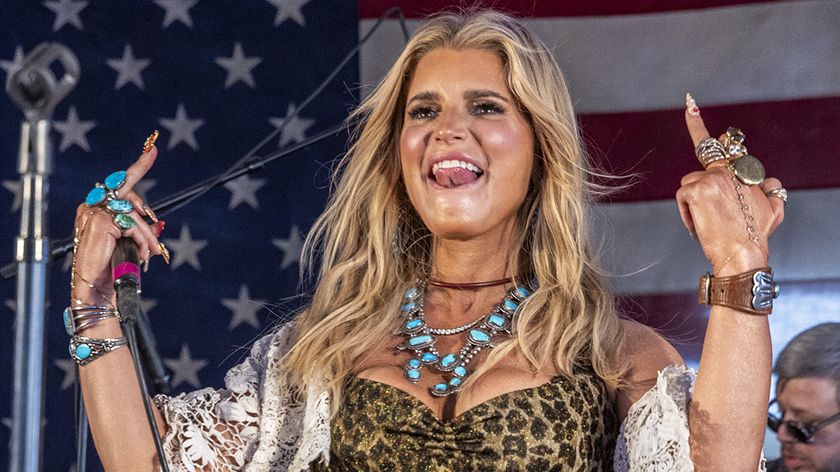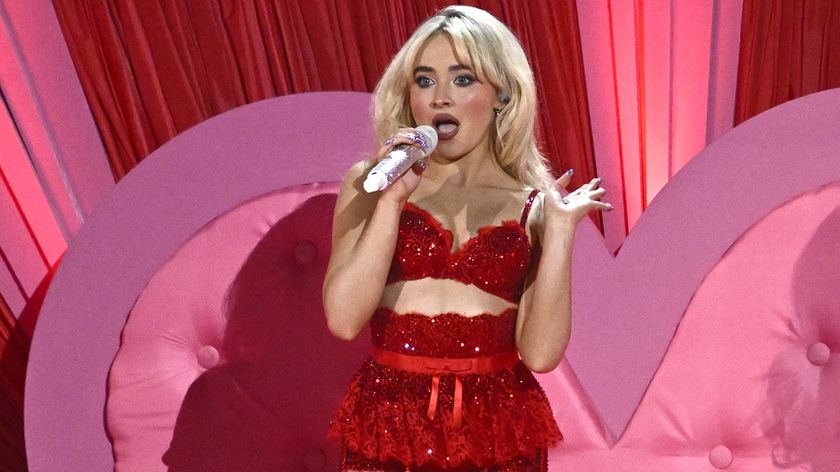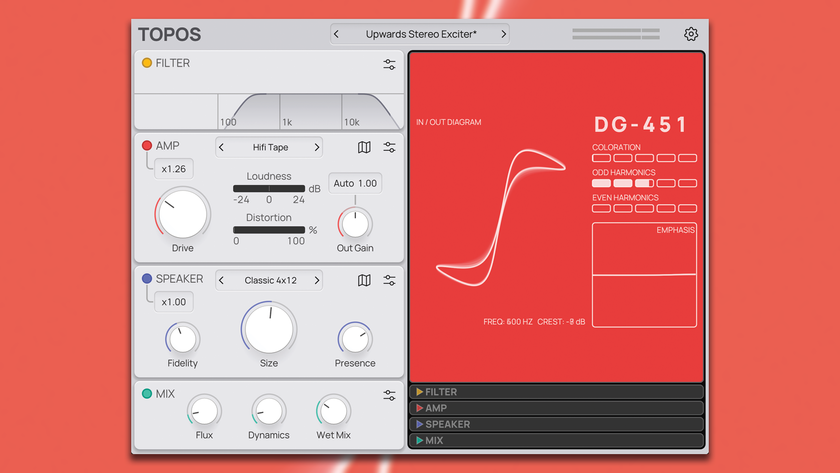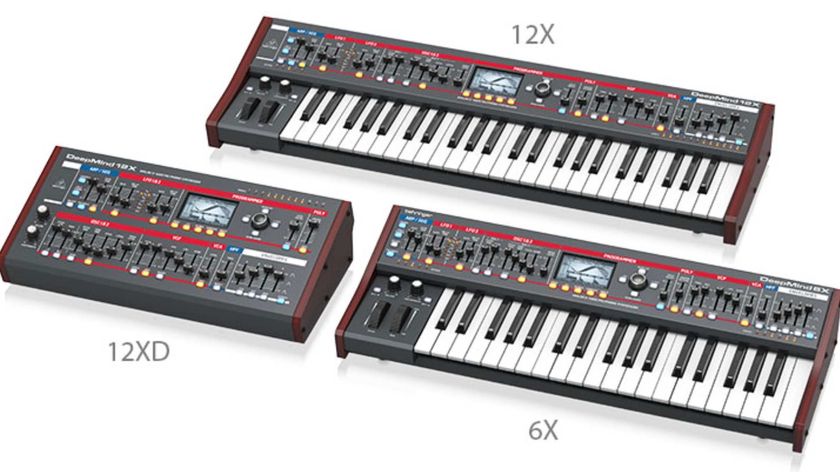SURVIVE talk synth collecting and penning the Stranger Things soundtrack
The Texas gear aficionados tell us what it's like to be a four-piece synth band
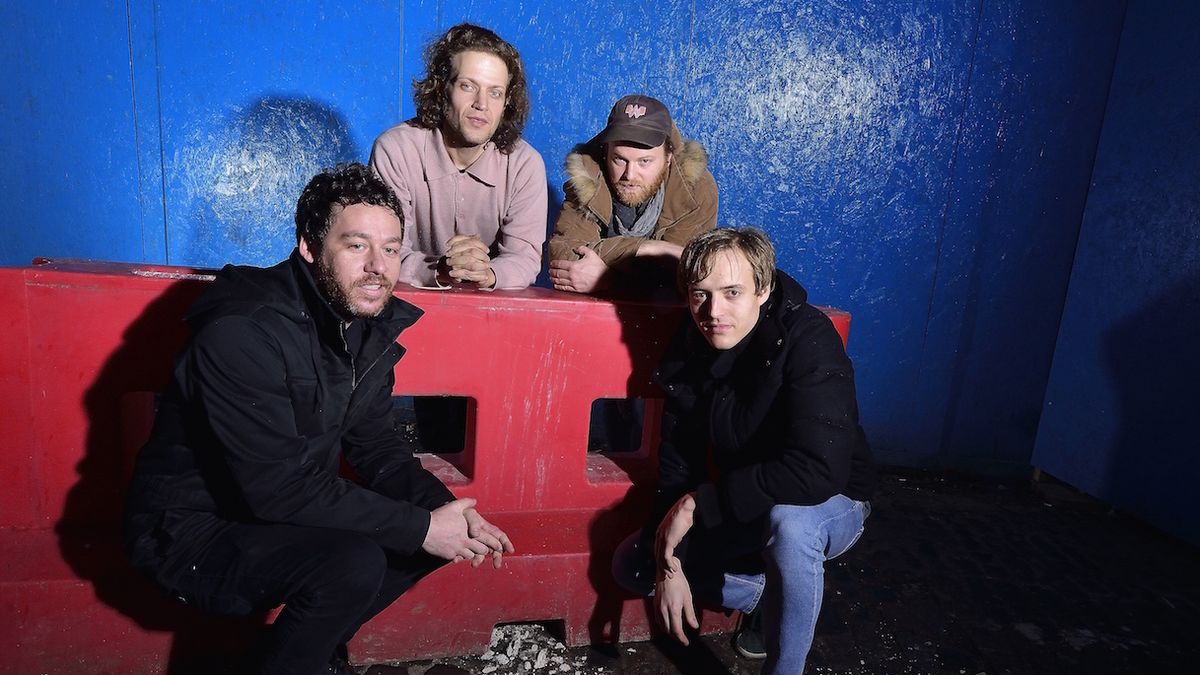
In Austin they say the taps run hot, cold and barbecue. And while plenty of other places outside of the Texas capital may have a good many taco stands and vintage clothing shops, the concentration of all these things seems higher in the ‘City of the Violet Crown’. They even have their own synth shop, which has been a handy thing for the members of SURVIVE since they formed in 2008.
In fact, a fair amount of the gear that Michael Stein maintains in his home studio has come from his time as an employee of Switched On, their local “synthesizer dream space… and repair spa”. The space is a cramped, near museum-like wonderland that features kit from practically every era of electronic music.
The other three members of the band – Kyle Dixon, Mark Donica and Adam Jones – file in and begin to kid Stein that they could probably walk off with a random keyboard from his considerable collection and he might not even notice. But with the spotlight they’ve found themselves under now that the music that Stein and Dixon composed for Netflix’s Stranger Things sci-fi horror series has garnered so much attention, they may want to hang on to whatever advantage they have in their arsenal.
Most electronic outfits these days are either solo acts or duos, so how did the four of you come to be a unit?
Adam Jones: “Me and Kyle and Michael are all from Dallas. We all grew up there. And then me and Kyle went to school [at Texas State University] in San Marcos and that’s where we met Mark. Michael stayed in Dallas to go to sound recording school while we were going to college and then once we got out, the three of us got a place in Austin together and we started getting some synthesizers. And we were like, ‘Oh, you remember Michael Stein from Dallas? He’s got a studio and he plays synths and stuff.’ So we started collaborating with him and that’s how we started the band. And then after about a year of doing collaborative sessions back and forth, we convinced him to move down here.”
Mark Donica: “We were like getting into synths and I guess Kyle linked up with Michael and came back and said, ‘Man… Michael’s gotten really into synths. Like he’s getting insanely deep.’”
Michael Stein: “They make for a good hobby because they don’t stop. It’s weird. You can make a new sound every day… you can buy another one [laughs].”
Get the MusicRadar Newsletter
Want all the hottest music and gear news, reviews, deals, features and more, direct to your inbox? Sign up here.
So none of you had formal musical training?
Kyle Dixon: “I did try to take a music theory class in high school with Adam, but I got kicked out it because I was being a brat basically.”
MS: “I think Mark is a rustic virtuoso… or maybe just rusty.”
MD: “I took piano lessons in elementary school for a year in third grade and then again in high school. But also I played trombone in band for a really long time. I didn’t know how to read music. I would just imitate what people around me were doing. Once I grasped what they were doing, I would just imitate it and expand on it.”
A lot of people are probably familiar with Austin’s musical legacy as far as Rock and Country go, but would you say that there’s been a healthy underground electronic layer to the scene as well?
MS: “I would say there’s been one for a bit. The people who run Switched On would have an annual party… an analogue synth meet-up. There was one in Dallas too. But the people there weren’t making music. They were just gear enthusiasts, whereas here people were actually using the equipment in bands.”
When we started we just thought ,‘Hey, let’s get a bunch of synths and play them loud out of amps in front of people
How did you guys make the decision to start playing everything live though?
KD: “I think that was one of the main tenets for starting – this was to be a ‘synthesizer band’. It was baked into the whole idea at first. So I think when we started we just thought ,‘Hey, let’s get a bunch of synths and play them loud out of amps in front of people’. Anything that I could think of at the time was probably made by one person on a laptop. And I’ve played shows like that before and it just sucked. It wasn’t fun.”
MD: “We wanted to be there and be present. And bring a live element to music that someone normally just does by pressing play on their laptop. I think one of the advantages to having a live band is that you can change things up on the fly and be spontaneous.”
Do you have the flexibility to improvise?
MS: “There are elements (of that). It’s not note for note. And every time it’s going to sound different because everything is played live and all the sounds are going to be created different. And there are different segues where we might choose to improvise between songs, but the song structures itself are pretty strict. We don’t really have a reason to deviate, but the leads are different. The expression is different.”
KD: “We might walk around a little more than we do in the recordings, but we’re not going to vamp on something for an extra three minutes, because it’s all in the MPC and it has a beginning and an end. The songs aren’t going to get any longer or shorter. We are playing it. It’s not being sequenced, so it might be a little different.”
How does the composition side of things work? Do you all bring things to the table separately?
MS: “We all have our own studios and typically one or two of us will start a song, and then we all collaborate on it to finish it.”
KD: “About half of the time that we end up with a song that’s actually on the record, it’s made by two or three of us starting an idea and then everyone comes together to finish it, or one person will have a skeleton or almost a complete song and then that comes to the group and we finish it from there.”
MD: “You might have some chords that you’re messing with at your house and then you’ll head over to Michael’s and he’ll have something crazy patch on his modular and you can say, ‘Oh I have these chords!’ and you’ll start playing them along to some cool sounds.”
So will you bring gear with you or just bring something that’s recorded?
MD: “Every so often we have done that, but as time has gone on, Michael has just accumulated a lot more synths.”
MS: “If I’m going to Kyle’s house, I might bring a tape echo because it’s always good to have a tape echo lying around.”
What do you wind up recording to?
MD: “We’re all Logic, all the way.”
MS: “I started in Pro Tools, but I couldn’t afford the plugins, so I switched to Logic and I never went back.”
KD: “I got Ableton when it first came out and used it up until Ableton 5. But at that point Logic’s plugins sounded better and the overall quality felt better to me.”
MS: “Ableton used to have this two-dimensional compressed, thin thing to it. And you could hear a song and think to yourself, ‘I bet that’s Ableton’. But that was a long time ago, maybe back in 2008.”
AJ: “And just like with a lot of instrumental music, there’s a ton of recordings for every song that don’t make the cut for the final [version]. So the way we compose comes from a lot of experimentation, where we take bits and pieces from takes that we thought worked. We might do several takes of a whole song and then decide if it worked at all.”
“Eventually it would be ideal if we had a rehearsal space where we could also record and have a lot of synths set up. But I think the most important thing is that with a typical band you would have a drummer and he would be playing his drum kit the whole time, and then there’s a bass player who’s going to be playing that the whole time… With our band anybody could be playing any part at any time. It’s more about coming together to agree about compositions.”
MS: “A lot of the songwriting process is usually in the creative realm of one person dialling in the sound design and different techniques where they’re manipulating the equipment in a certain way. There’s a mood that gets set when all these things are working together.”
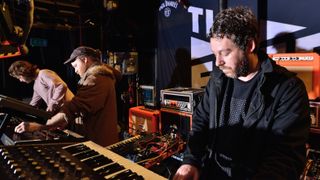
Do you guys still find yourselves succumbing to gear lust periodically?
KD: “Oh yeah…”
AJ: “For sure.”
MD: “Massively. I want a Serge Modular very badly. There’s something about them. They look really cool and they sound really good.”
MS: “I always wanted a VCS 3. It’s the first synth I ever wanted when I started researching them. But at this point, I wonder if I wouldn’t just wind up making crazy sound effects.”
KD: “I don’t expect to stop buying gear ever, unless I just decide that I don’t like music anymore. You can now buy a new analogue synthesizer for relatively cheap.”
MS: “That actually sounds good.”
KD: “We’re going to go to Europe and be able to rent new ARP Odysseys.”
MS: “That’s very cool.”
MD: “It’s crazy. It’s the first synth that I started playing in our band.”
Eurorack is a big rabbit hole these days…
KD: “Yeah… I have a lot of Eurorack. I like it in the studio. I really like the Synthesis Technology stuff. I think that Prophet-5 [E440] filter they made is really nice. That’s probably my favourite filter in Eurorack. I like the Bubblesound [SeM20] filter a lot too. The 4ms PEG [Pingable Envelope Generator] is cool. The Make Noise MATHS and FUNCTION is good. I also like the [E102] Quad Temporal Shifter which is another Synthesis Technology. I got the Random Source Serge Triple Waveshaper and that’s pretty cool.”
MD: “Do you like your Kilpatrick [K2579] Sequencer?”
KD: “Yeah… I use it a lot.”
MD: “Cool. Just don’t tell anyone.”
MS: “The [Intellijel] Rubicon is great. The thru-zero oscillators sound really natural.”
What traditional hardware synths are you most individually connected to?
MS: “I can never not have fun on the ARP 2600. It’s just a semi-modular synth that has a lot of functionality, so you can patch up sounds that you hear on a modular very quick because there’s a lot of FM cross mod. And there’s envelope pitch modulation for all the oscillators, which if you wanted to patch up on a modular might take you 15 minutes. But with this you can just turn a couple of knobs and it will take you 20 seconds to get those classic ’70s tones.”
MD: “The main one I’ve been obsessed with, for live shows at least, is the Roland SH-5. It’s kind of rare. They’re not super common. It has two LFOs and a Sample + Hold, two VCOs and Ring Mod. It’s pretty decked out. It has all the classic features you would want. I kind of have an affinity for it when it comes to playing live because it’s so easy for me to tweak all the knobs. I can play a note with one finger and with the same hand tweak the filter up and down. I’ve just become very intertwined with it. I also have a Memorymoog and I really like that synth just because it’s super raw and unwieldly sounding and out of tune. It’s hard to wrangle into sounding nice and pretty but when it does it sounds really thick.”
AJ: “My favourite thing lately is the Prophet-6. I got the desktop version and I’ve been having a lot of fun designing sounds on that. It sounds gorgeous. But before I used the Korg Polysix and the Roland RS-09 for a long time. But if you want to break it down to the core elements for the first version of SURVIVE from the very beginning, they have been the RS-09, the Mono/Poly, the SH-101 and the Sequential Circuits Six-Trak.”
KD: “The Mono/Poly is on a lot of stuff [we’ve done]. It was the first real synthesizer I got and it’s what I play live. The arpeggiator is really good. It has a very characteristic sound when it’s arpeggiating in the high octaves. It’s very sharp sounding. And it’s kind of a unique synth to me because it doesn’t particularly sound old. It’s definitely analogue but it doesn’t necessarily sound like a Korg 770, which sounds like the ’70s.”
MS: “The Mono/Poly never woodened [laughs].”
What synth did you use to come up with the bass pattern at the beginning of Floating Cube from the first album?
MD: “It was on my ARP Odyssey, which when I wrote that had been taken apart. It was in my kitchen and the keyboard had been taken off. It was exhibiting some problems [laughs]. I took the whole thing apart and that was the only way I could play it. There was a loose connection somewhere and by taking it apart and having the keyboard off with the rest of the synth up and vertical I was able to make it work. So I started recording because I was so excited that I got it working after a couple of months of being messed up. And it’s just an LFO on the filter with key retrigger. So each note kind of flows into the next because there’s a ramp into the next note that’s being played.”
KD: “What made it onto the recording was actually recorded live. That was one of the few things, if not the only thing, that was recorded in the studio.”
MS: “We went into a studio to record as a live band [once] so he put that Odyssey through some kind of tube compressor and really slammed it. It was maybe a bit unintentional that it sounded that smashed, but it sounded amazing.”
What about longer pieces like cschz 01 from the HD009 release?
KD: “Conrad Schnitzler had died the week that we made that, so we just used it as the catalogue number. One of the few improv shows that we played, we had made copies of that tape for that show so that’s where that came from.”
AJ: “The A side of that is the full-length version of Deserted Skies from the first album.”
KD: “It’s like 20 minutes long, and we liked the whole take, but we couldn’t put that on an album.”
MS: “It’s basically an unedited version of the whole performance.”
AJ: “And the B-side is just a compilation of Ambient recordings that we’ve done in the studio. We have tons and tons of stuff that you could put on Ambient mix tapes that usually ground zero for our compositions. We’ll come up with textural stuff that maybe sparks an idea for a more precise track.”
Was the aggressive drum pattern that starts Copter on the new album RR7349 the basis for how that track began?
MD: “I remember going over to Kyle’s house and he had that drum thing he had been working on for a while and I started messing with his Mono/Poly and tweaking the decay up and down and that’s how the bassline got started.”
They needed something like a sci-fi show to find the context for which they were supposed to enjoy this music. Now you don’t have to explain it to people anymore
Can you talk a little about how much spotlight has been put on the band now that Stranger Things has become such a huge hit?
KD: “It’s certainly brought a lot more attention to the band, which is good. I feel like there are people at the shows now who don’t really know why they’re there a little bit [laughs].”
AJ: “It’s been our break I guess. It’s legitimised our band for a lot of people whereas they didn’t really know how to observe and consume our art before.”
MD: “Yeah, it was like, ‘Where’s the singing? I can’t dance to this. It’s cinematic but there’s no movie playing.’”
AJ: “They needed something like a sci-fi show to find the context for which they were supposed to enjoy this music. Now you don’t have to explain it to people anymore, unlike before when we toured with someone like Com Truise or opened for Neon Indian or Grimes they were like, ‘I’m a little bored and I’m not dancing. I don’t understand it’. Now we’re a little more like the feature item and people are starting to get it.”
Are you up for doing more soundtrack work?
MS: “It’s fun.”
KD: “It’s not a hassle. It’s going to be interesting to see how it fits in with the touring.”
AJ: “We’re super busy now and I know that SURVIVE will be doing more hired recording work. Like we just worked on some art installation stuff. There’ll be a lot more opportunities for projects coming up and we’ll have to be more measured about what we can take on, because we do have a pretty hefty live schedule and we do have to work on the next album. But we’ll do what we can.”
RR7349 is out now on Relapse Records.


Future Music is the number one magazine for today's producers. Packed with technique and technology we'll help you make great new music. All-access artist interviews, in-depth gear reviews, essential production tutorials and much more. Every marvellous monthly edition features reliable reviews of the latest and greatest hardware and software technology and techniques, unparalleled advice, in-depth interviews, sensational free samples and so much more to improve the experience and outcome of your music-making.

“We hadn’t rehearsed. We weren’t used to playing acoustic. Even the people from MTV thought it was horrible”: A new Nirvana Unplugged exhibition features not only Kurt Cobain’s $6 million Martin D-18E but also his green cardigan

“The screaming was deafening!”: How a Japanese tour transformed the career of a weird little band known as the ‘Beatles of hard rock’


